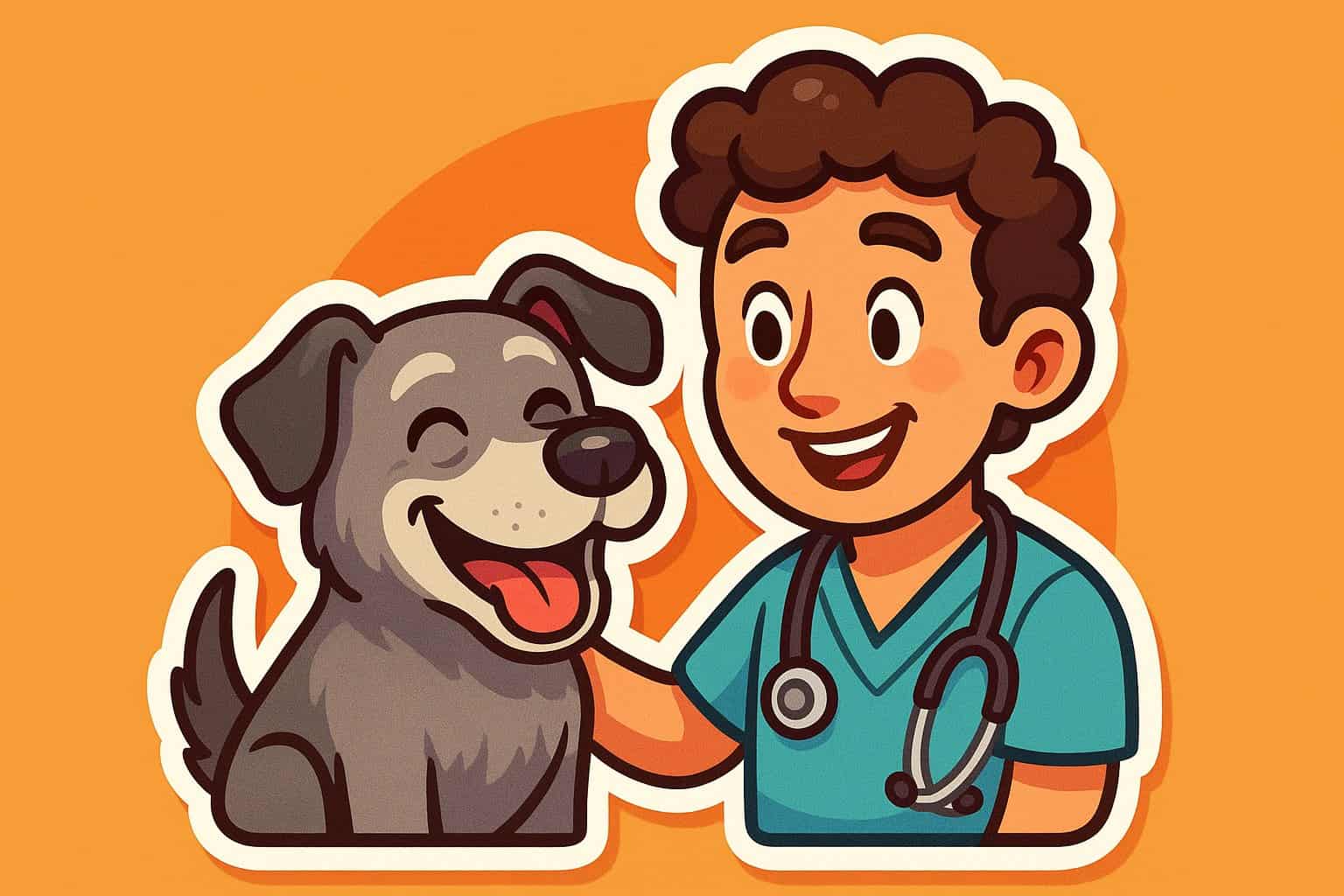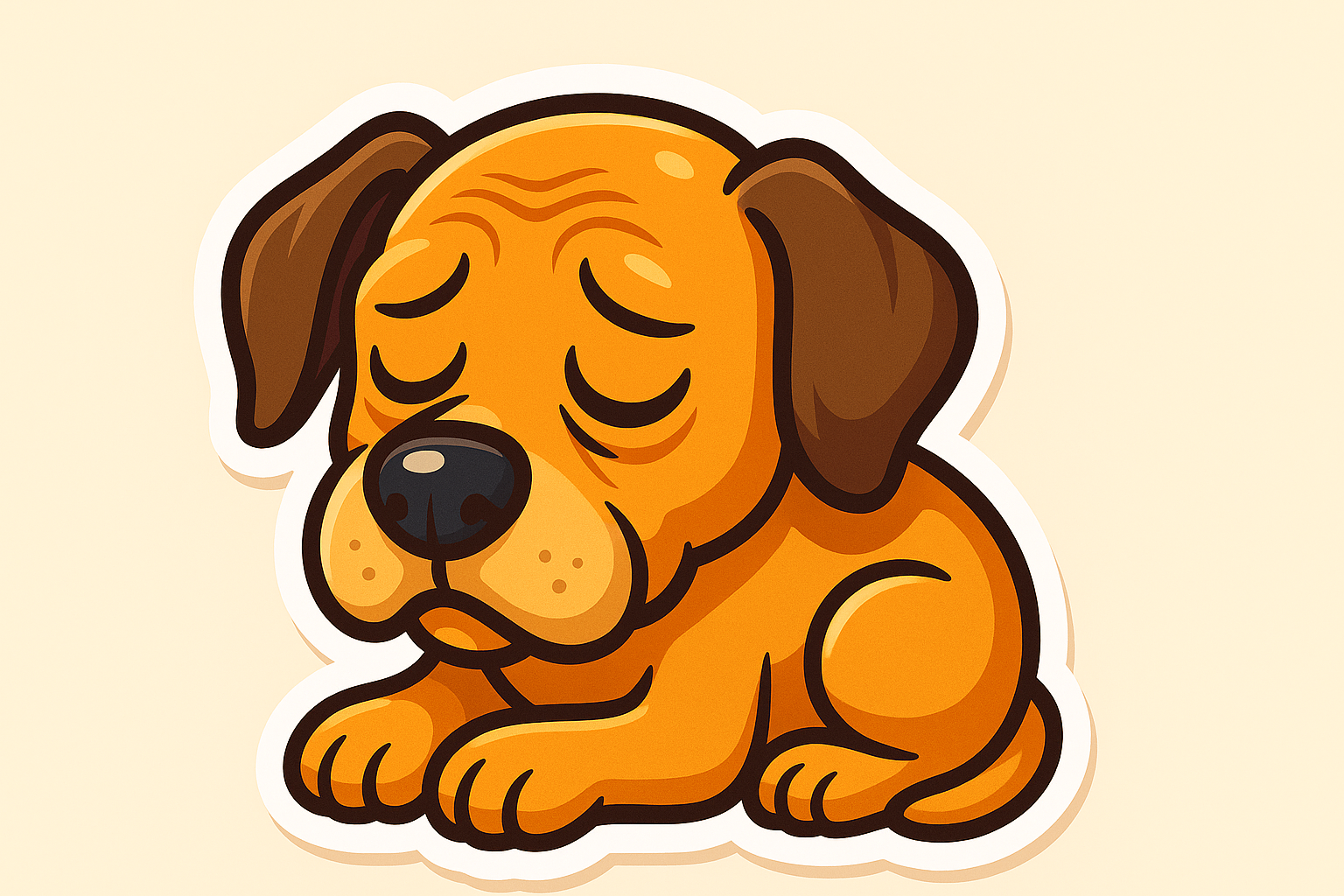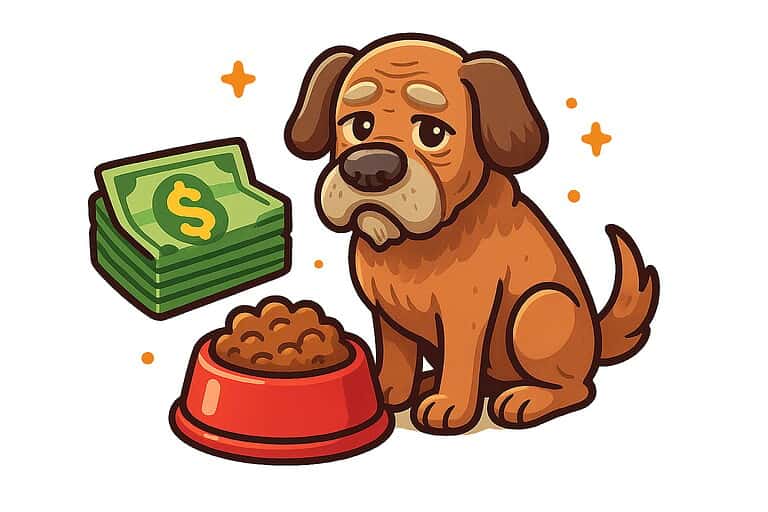How Often Should I Take My Senior Dog to the Vet?

Your senior dog has stuck by your side for years. Now that they’re hitting their golden years, you might wonder how to keep up with their changing health needs.
Dogs age a lot faster than we do. Those gray whiskers and slower walks are gentle reminders that your furry friend needs extra attention from their vet.
Senior dogs should visit the veterinarian at least twice a year, or every six months, instead of the annual visits that younger dogs typically need. More frequent visits help catch age-related health issues early, when they’re usually easier—and less expensive—to treat.
Your vet can check everything from joint pain to organ function during these checkups. These visits can make a big difference in your dog’s comfort and quality of life.
Vet visits don’t have to be stressful. With a little planning, you can spot warning signs early, know what to expect at the clinic, and build a healthcare routine that keeps your senior dog happy for as long as possible.
Why Regular Vet Visits Matter for Senior Dogs
Senior dogs face unique health challenges. They need closer monitoring than younger pets.
Regular checkups help catch problems early. Your aging companion gets the specialized care they deserve.
Early Detection of Health Issues
Senior dogs are experts at hiding pain. It’s a survival instinct, and it makes it tough to spot problems at home.
Common senior dog health issues include:
- Arthritis and joint pain
- Heart disease
- Kidney problems
- Vision and hearing loss
- Cancer
A vet can spot these conditions through exams and blood tests before your dog shows obvious signs. Early treatment usually leads to better outcomes.
Think of it like your own checkups. You might feel fine, but blood work can reveal issues before you notice symptoms.
Aging and Changing Needs
Your dog’s body changes as they age. What worked at age three might not cut it at age ten.
Senior dogs need different nutrition, exercise, and sometimes new medications. Your vet can adjust your dog’s care plan based on their current needs.
Your vet might recommend:
- Senior-specific food formulas
- Joint supplements
- Modified exercise routines
- Pain management strategies
Regular visits help track these changes. Your vet can compare results over time and spot trends you might miss.
Building a Relationship with the Vet
Seeing the same vet regularly helps them learn your dog’s normal patterns. They’ll know your dog’s baseline heart rate, weight, and behavior.
When your dog gets sick, your vet can spot what’s different because they know what’s normal. That’s a huge advantage.
Regular visits also help your dog feel more comfortable at the clinic. Familiar faces and routines can make stressful situations a little easier.
Switching vets often means starting from scratch each time. Building a long-term relationship leads to more personalized care for your senior dog.
How Often Should You Bring Your Senior Dog to the Vet?
Most vets recommend check-ups every six months for senior dogs. Your dog’s age, health, and lifestyle can influence this schedule.
Recommended Visit Frequency
Senior dogs should see the vet every six months. That’s twice a year, not just once.
Why the change? Senior dogs age much faster than we do. Six months in your dog’s life can equal several years for us.
During these visits, your vet can catch problems early. Many age-related conditions develop quickly in older dogs.
Here’s what usually happens during these visits:
- Blood work to check organ function
- Physical exam for lumps or pain
- Weight and mobility assessment
- Dental health check
- Discussion of any behavioral changes
If your dog has ongoing health issues, your vet might suggest more frequent visits. Don’t stress—these extra check-ins help your friend stay comfortable.
Factors That Influence Visit Schedule
Your dog’s needs might call for a different schedule. Breed size matters—giant breeds often need more frequent check-ups since they age faster than smaller ones.
Current health issues play a big role. Dogs with diabetes, heart disease, or kidney problems may need monthly visits. Your vet will tailor a schedule just for your dog.
Lifestyle counts too. Active seniors who still hike and play might need different care than couch potatoes. Outdoor dogs face different risks than indoor ones.
Age within the senior years makes a difference. A 7-year-old golden retriever isn’t the same as a 12-year-old.
If your dog seems slower or acts differently, that can affect how often you should visit the vet.
When to Visit More Often
Don’t wait for the next scheduled appointment if you notice worrying changes. Senior dogs can develop problems quickly between visits.
Call your vet right away if your dog shows:
- Loss of appetite for more than 24 hours
- Trouble breathing or heavy panting
- Sudden weakness or collapse
- Ongoing vomiting or diarrhea
- Changes in bathroom habits
- Confusion or disorientation
Book an extra visit for signs like:
- Drinking or urinating more than usual
- New lumps or bumps
- Worsening limping or stiffness
- Bad breath or trouble eating
Maybe your dog just seems tired or less interested in walks. Even small changes deserve attention, even if they don’t seem urgent.
If your dog has a chronic condition, your vet might want to see them every 3-4 months instead of every six. Closer monitoring helps adjust treatments as needed.
What to Expect During a Senior Dog Wellness Exam
Senior wellness exams focus on catching age-related problems early and keeping tabs on your dog’s overall condition. These visits usually include thorough physical checks, blood work, and any needed vaccines.
Typical Health Checks
Your vet will start with a nose-to-tail physical exam. They’ll check your dog’s eyes for cataracts or other vision issues.
Weight and body condition get special attention. Your vet will feel along the ribs and spine to see if your dog is carrying extra weight.
The exam includes listening to your dog’s heart and lungs. Your vet checks for murmurs or irregular rhythms.
Joint and mobility checks matter a lot for seniors. Your vet will gently move your dog’s legs and look for swelling, stiffness, or pain.
They’ll also check your dog’s mouth and teeth. Dental problems can get worse with age and affect overall health if ignored.
Common Diagnostic Tests
Blood work is a big part of senior exams. Basic panels check kidney and liver function.
Complete blood count (CBC) looks at red and white blood cells. This test can catch anemia or infections early.
Your vet might check blood pressure too. High blood pressure is more common in older dogs and can hurt organs if not caught.
Urinalysis checks kidney function and looks for infections or diabetes. Kidney problems often show up in urine tests first.
Some vets recommend thyroid tests for older dogs. Thyroid issues can cause weight changes, skin problems, or odd behavior.
Regular Vaccinations and Boosters
Senior dogs still need core vaccines, but the schedule might shift. Most dogs get rabies boosters every one to three years, depending on local rules.
DHPP vaccines (distemper, hepatitis, parvovirus, parainfluenza) are usually given every three years for seniors. Your vet might check antibody levels before giving boosters.
Lifestyle vaccines depend on your dog’s activities. Dogs who visit parks or boarding facilities might need kennel cough vaccines each year.
Lyme and other tick-borne vaccines are important if you live in risky areas. Your vet will suggest what fits your dog’s lifestyle and where you live.
Some seniors with health problems might need a modified vaccine schedule. Your vet will adjust timing based on your dog’s health and immune system.
Recognizing Signs Your Senior Dog Needs an Extra Trip
Some changes in your senior dog are normal, but others mean you should call your vet. Sudden behavior shifts or new physical symptoms often need quick attention.
Behavioral Changes to Watch For
Has your social dog started hiding or avoiding family time? Sudden behavior changes often mean pain or illness your dog can’t explain.
Changes in sleep patterns are worth noting. If your dog suddenly sleeps all day or paces at night, something could be off.
Loss of appetite is a big concern in older dogs. Maybe your once food-obsessed pup now ignores their favorite treats.
Watch for confusion or disorientation. Does your dog seem lost in familiar places or forget routines? This might point to cognitive issues.
Aggression or anxiety in a usually calm dog often means discomfort. A gentle senior might snap when touched if they’re hurting.
Bathroom habit changes matter too. If your house-trained dog starts having accidents, it could be a medical issue.
Physical Symptoms That Require Attention
Some physical changes in your senior dog can’t wait for the next checkup.
Trouble breathing is always urgent. Heavy panting, wheezing, or labored breathing mean you should call your vet right away.
Sudden weight loss or gain can signal serious problems. Notice if your dog’s collar seems looser or you can feel ribs more easily.
Watch for mobility changes. Limping, struggling to get up, or stiffness after rest might mean joint problems or injuries.
Vomiting or diarrhea that lasts more than a day needs attention. Seniors dehydrate quickly, making these symptoms risky.
Drinking habit changes are important. Drinking much more or less than usual both warrant a vet visit.
Tips for Making Vet Visits Easier for Older Dogs
Senior dogs often find vet visits more stressful, but a little prep can make things smoother. Small changes in how you prepare and handle the clinic visit can really help.
Preparing for the Appointment
Start getting your senior dog ready a few days before the visit. If it’s been a while since the last trip, practice getting in and out of the car. Some older dogs forget routines if they don’t do them often.
Write down your questions or concerns ahead of time. Senior dogs often have several issues to discuss, and it’s easy to forget something in the moment.
Bring all your dog’s current medications. If you can, bring the actual bottles. This helps your vet check for drug interactions or needed changes.
Pack a comfort item like a blanket or toy. Familiar smells can help calm anxious dogs.
Schedule your appointment during quieter clinic times if possible. Mornings or early afternoons are usually less busy. Ask the staff when things are calmest.
Consider bringing a list of your dog’s recent eating, drinking, and bathroom habits. These changes are important for diagnosis.
Keeping Your Dog Comfortable
Use a non-slip mat in your car and on exam tables. Senior dogs with joint pain or balance issues feel safer with good traction.
Bring a thick blanket for the exam table. Metal surfaces can be cold and uncomfortable for older dogs.
Ask if your dog can stay on the floor for part of the exam. Some vets are happy to kneel down, especially for large or stiff dogs.
Keep your car at a comfortable temperature. Older dogs can get too hot or cold quickly.
Try a ramp or steps for getting in and out of the car. Jumping is tough on sore joints, even for small dogs.
If your dog pants a lot when stressed, bring a small fan or ask the clinic if they have one.
Reducing Stress at the Clinic
Arrive a few minutes early, but try not to wait too long in the lobby. Call ahead to check if they’re running on time. Some clinics let you wait in your car.
Ask if there’s a separate entrance or quiet waiting area for anxious pets. Many clinics offer this now.
Request the same exam room if possible. Familiar spaces can help your dog relax.
Speak in a calm, normal tone. Your dog picks up on your mood, so if you stay relaxed, they might too.
Don’t rush through the appointment. Good vets know seniors need more time. Ask your questions and make sure you understand all recommendations.
If you need help, ask a staff member to hold or comfort your dog during exams. Sometimes an extra pair of gentle hands makes all the difference.
Creating a Health Care Routine at Home
When you regularly check on your dog at home, you can spot health changes early. Your vet gets a clearer picture of your senior dog’s daily life when you share these details.
Keeping records and staying in touch with your vet really matters. It’s one of those things that can sneak up on you if you don’t pay attention.
Tracking Changes in Your Dog
Ever feel like your senior dog seems a bit off, but you can’t quite say how? Setting up a simple tracking routine helps you notice those little shifts that might mean something’s wrong.
Just jot down what your dog eats and drinks each day. Use your phone or a notebook—whatever’s handy.
Pay attention to bathroom habits, energy, and sleep. Even small changes can matter.
Key things to track daily:
- Appetite and water intake
- Bathroom frequency and consistency
- Energy levels during walks
- Sleep quality and restlessness
Snap a photo of your dog once a week, always from the same angle. It’s surprising how much you can miss with your eyes alone—photos make weight changes obvious.
Watch for limping or stiffness, especially when your dog gets up. Is your dog suddenly avoiding stairs? Joint problems often start small.
If your dog takes medicine, write down the time you give each dose. It’s easy to forget, and this way you can also spot any odd reactions.
Communicating with Your Vet
Ever leave the vet and realize you forgot to mention something important? Prepping ahead helps you get more out of each visit.
Before your appointment, look over your notes from the last few weeks. Make a list of anything that’s bugging you or seems new.
Bring this information to appointments:
- Your daily tracking log
- Current medications and dosages
- Recent photos showing any physical changes
- List of new symptoms or behaviors
Call your vet if you notice anything sudden or strange. Senior dogs can go downhill fast, and catching things early makes a difference.
Ask your vet what’s normal for aging and what’s a red flag. Sometimes it’s hard to tell if you should worry or just keep an eye on things.
If your dog takes several medications, ask for a written schedule. It keeps things organized and prevents mix-ups.
Budgeting and Planning for Senior Dog Vet Visits
Vet bills for older dogs can range from $200 to $800 for routine stuff. Emergency care? That can hit thousands before you know it.
Pet insurance gets pricier as your dog ages, but it can save you from a financial nightmare.
Understanding the Costs
A typical checkup for a senior dog costs $200 to $400. Most vets want to see older dogs twice a year, not just once.
Bloodwork adds up fast. Full panels usually cost $150 to $300 per visit. Your vet might suggest these every six months to catch things early.
Common senior dog expenses include:
- Routine wellness exams: $75-150
- Blood chemistry panels: $100-200
- Urinalysis: $50-100
- X-rays: $150-400
- Dental cleanings: $500-1,500
Emergency visits are rough on your wallet. Heart or kidney problems, or a sudden illness, can cost $1,000 to $5,000. Sometimes it’s just a subtle change—like your dog drinking more water—that leads to a big diagnosis and even bigger bills.
Try to set aside $100 to $200 every month for your senior dog’s care. It takes the sting out of surprise expenses and helps with routine stuff too.
Pet Insurance for Older Dogs
Insurance for older dogs isn’t cheap, but it might save your bacon on a big bill. Most companies bump up premiums by 10-20% each year after your dog turns seven.
If you haven’t gotten insurance yet, it’s tougher now. Many companies won’t cover things your dog already has, like arthritis or heart murmurs.
Key insurance considerations for senior dogs:
- Monthly premiums: $40-120 for older dogs
- Deductibles often increase with age
- Wellness plans may not cover pre-existing conditions
- Some insurers stop accepting dogs over 14
Could you handle a $3,000 emergency bill tomorrow? If that sounds impossible, insurance might be worth it—even if the monthly payment stings a bit. Weigh the cost against what you might end up paying out of pocket.
Building a Trusting Partnership with Your Veterinarian
Finding the right veterinarian for your senior dog is a bit like searching for a good friend who just happens to know everything about canine health. You want someone who listens, and treats your dog with gentle care.
Communication is key when you work with your vet. Don’t hesitate to ask questions about your dog’s health changes or treatment options.
If something doesn’t make sense, speak up. Vets appreciate honesty and curiosity.
Keep detailed notes about your dog’s behavior at home between visits. Maybe you’ve noticed your dog sleeping more or eating less.
These small details help your vet see the bigger picture. Sometimes, what seems minor to you can mean a lot to them.
Be honest about your budget if cost is a concern. Most veterinarians can work with you to prioritize the most important treatments first.
They might suggest payment plans or alternative approaches. It’s worth asking, even if you feel awkward about it.
Consider these ways to strengthen your partnership:
- Bring a list of questions to each appointment
- Take notes during the visit or ask for written instructions
- Follow up if you notice new symptoms between visits
- Ask about home care techniques you can learn
If your current vet doesn’t feel like the right fit, it’s okay to look elsewhere. Your senior dog deserves a veterinarian who makes both of you feel comfortable and heard.






